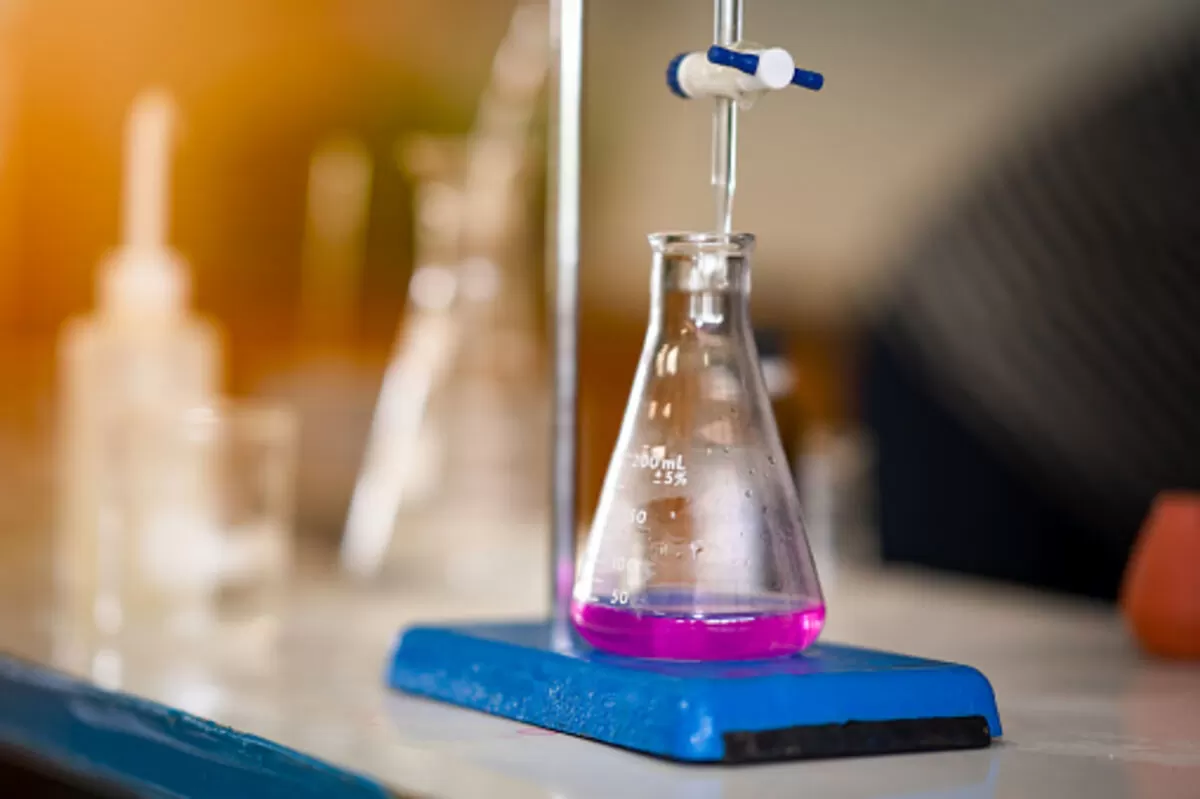

Titration is a method for determining the concentration of an analyte in a sample. A known ratio between the analyte and sample is required for the titration to be adequate. In addition, the reaction must be specific, with no side reactions or interferences. The titration also must have a clear end, which can be determined manually by using a color indicator or automatically by using an indicator electrode.
Back titration is a scientific procedure used to determine the amount of an acid or base in a system. By measuring how much acid or base is left after the initial reaction, other factors, such as the initial molarity or volume of the acid, can be determined. The technique can also be used in a variety of other reaction systems.
The titration procedure involves certain conditions and calculations, which can take time. However, technological advancements have made it possible to perform back titrations with much greater precision. Modern titrators can compute the concentration of a substance automatically, saving time and effort for the lab personnel. They can also store information about variables and have a much higher resolution than manual back titration.
Back titration is often used for compounds that do not dissolve in water. This is because they have an endpoint that is hard to detect. Volatile substances, on the other hand, will lose substance during the titration process. Using this technique, a known amount of reagent A is allowed to react with an unknown amount of reagent B. A subsequent titration with a standard reagent C of known concentration determines the amount of unreacted A. Stoichiometric calculations can determine this amount.
An acid-base titration is a quantitative analytical technique that measures acid and base concentration in a solution. An acid sample is mixed with a standard solution. The standard solution neutralizes the acid, and a pH indicator is used to measure the rate of the acid-base reaction.
The amount of an acid or base solution that reacts with a reagent is known as the titration volume. The titrant and analyte are mixed in an equal volume. The indicator is a dye that changes color to indicate when the titration has reached its endpoint.
The titration curve plots a solution’s property with increasing titrant amounts. Using the titration curve, a scientist can easily monitor the progress of titration and identify its endpoint. To conduct an acid-base titration, you must prepare the following apparatus: a measuring cylinder, conical flask, beaker, and burette.
Redox titration is a type of titration that utilizes a redox reaction between the analyte and the titrant. This method may also involve using a potentiometer or redox indicator to measure the reaction.
Redox titration uses a ratio of oxidizing and reducing agents in an aqueous solution. Usually, the oxidizing agent will remove electrons from the analyte while the reducing agent will gain them. In this way, the concentration of the analyte and titrant is correlated.
Redox titration tests the concentration of vitamins in various foods and pharmaceutical products. It is also used to determine the amount of alcohol in a wine or beer. Another application of redox titration is to determine the quality of cooking oils. By measuring the amount of hydrogen in the analyte, a chemical can determine how much alcohol is present in the substance.
A solution’s color depends on the proportion of oxidized or reduced form of a titrant. For example, MnO4 is oxidized and gives off a solid purple color. This purple color stays in the solution until it reaches the equivalence point. Then, the first drop of excessive MnO4 gives the solution a permanent purple color.
Titration is an analytical technique used to compare concentrations of two substances. It involves measuring the concentration of a sample with an auxiliary reagent and a reference substance. This method requires unique glassware, volumetric flasks, and pipettes, which measure volume accurately. A lab manual should include a description of this glassware and guidelines foritsr use. Titration is typically repeated several times, and the results are averaged. There are two types of titration: the direct method and the indirect method.
Titration methods are widely used in manufacturing, where raw materials are mass-produced into finished products. They are used in chemical and pharmaceutical manufacturing and food processing. Titration is a critical part of these industries, providing a basis for quality control and product research.
The most common method of titration involves the use of a glass burette. These instruments are made of glass and have graduations of tenths of a milliliter. The burette also has an outlet at the bottom that allows for precise addition and measurement of the titrant. Usually, 25-ml burettes are used.
Have you ever looked down at your carpet and wondered if there’s a budget-friendly way…
Counter-Strike 2 (CS2) has elevated the thrill of case openings, captivating both seasoned CS:GO veterans…
Trying to sell a car online should be simple, but sometimes buyers lose interest fast.…
In the hustle and bustle of modern life, finding moments of quiet solace can feel…
You have probably heard on the importance of socializing dog after getting a puppy. It…
The mortgage industry is undergoing a significant transformation, driven by the rise of automation and…